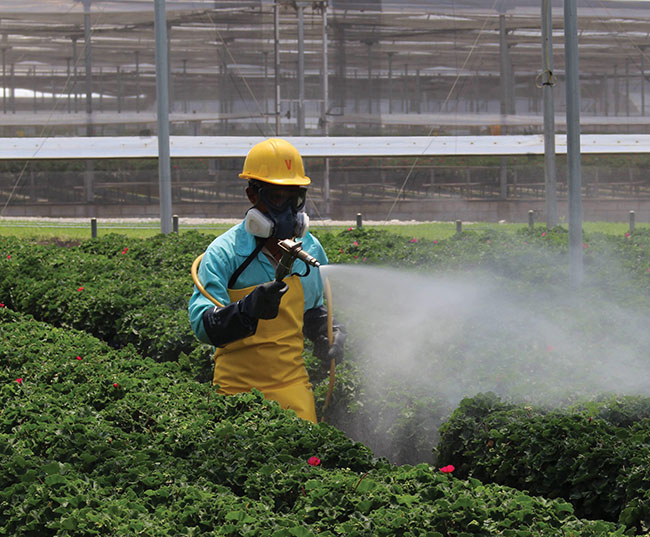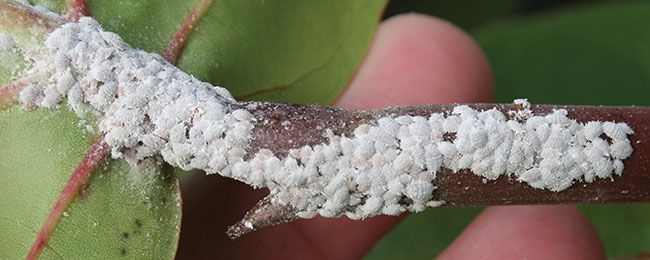Dr. Bugs: Resulting resistance
Answer: Insecticides are used to manage populations of insect pests including aphids, fungus gnats, leafminers, mealybugs, thrips and whiteflies in greenhouse production systems below plant-damaging levels. However, continual reliance on insecticides with the same mode of action may result in insect pest populations developing resistance.
So, what is resistance? Resistance is a function of reduced sensitivity of an insect pest population to an insecticide based on the failure of an insecticide to manage insect pest populations below plant-damaging levels when used according to label directions.
Resistance develops at the population level and can be inherited by individuals in the next generation. For instance, surviving insect pests can pass resistant traits (genetically) onto their offspring associated with the next generation, which enhances the number of individuals with resistant traits in the insect pest population.

Frequency of applying insecticides, or selection pressure, is one of the main reasons why insect pest populations develop resistance to insecticides. Selection pressure for resistance increases as the frequency of insecticide applications increases, especially when insecticides with similar modes of action are applied in succession. The rate at which insecticide resistance develops in an insect pest population depends on several biological factors, including female reproductive capacity, number of individuals (offspring) produced, number of generations per cropping cycle, generation time and host plant range.
There are at least four ways that insect pest populations can develop resistance to insecticides. These include metabolic resistance, altered target-site resistance, behavioral resistance and penetration resistance.
Metabolic resistance entails the degradation of an insecticide active ingredient by an insect pest. When an insecticide enters the insect body, enzymes detoxify or convert the active ingredient into a non-toxic form that is subsequently removed with other waste products. Resistant insects possess higher levels of detoxification enzymes than susceptible pests. In addition, detoxification enzymes can degrade different insecticides. Metabolic resistance is the most common resistance mechanism associated with insect pests.
Altered target-site resistance, or physiological resistance, occurs when a pest modifies the target site of the insecticide, which decreases sensitivity to the insecticide active ingredient at the physical point of attachment. This is similar to a lock being changed so the key will not work. Altered target-site resistance is the second most common resistance mechanism of insect pests.
Behavioral resistance is associated with insect pests recognizing insecticide residues on plant parts (e.g. leaves, stems or flowers) and changing behavior to avoid exposure. Insects may stop feeding if they encounter insecticide Mealybugs exhibit penetration resistance by extending the time required for the insect to be affected. residues or leave the area after an insecticide spray application by moving to the leaf underside, moving deeper within the plant canopy or flying away.

Penetration resistance involves resistant individuals absorbing the insecticide at a slower rate than susceptible pests because the insect cuticle (skin) is thicker, reducing absorption of the insecticide into the insect body. Penetration resistance can protect insect pests from a wide diversity of insecticides. In addition, it can occur with other resistance mechanisms like metabolic resistance. Insecticides that take longer to penetrate through the insect cuticle may be more susceptible to detoxification enzymes associated with metabolic resistance.
Greenhouse producers can avoid or delay resistance developing in insect pest populations based on the four types of resistance described above, and by rotating insecticides with different modes of action.
For more information on how to rotate insecticides with different modes of action, refer to the following extension publication:


 Video Library
Video Library 



















